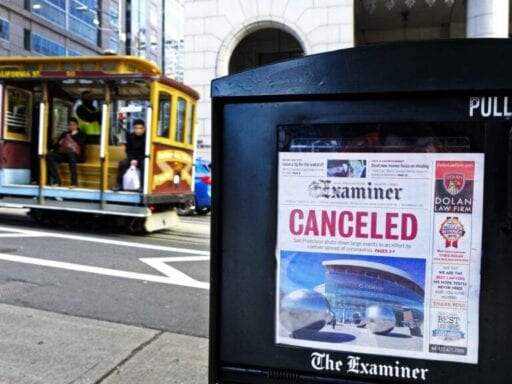Page views were up 30 percent last week compared with last year.
If you feel like you’ve been glued to the news lately, you’re not alone. We’re collectively reading much more news during the novel coronavirus pandemic than normal, according to new publisher traffic data.
Our thirst for information — and entertainment — makes sense. The coronavirus outbreak is a vast and urgent topic, and new developments about the science behind the outbreak as well as society’s response to it are unfolding on an hourly basis. So we’re all looking for information and context about it in this time of uncertainty.
Many of us also have a bit more time to read the news as various institutions have been impacted by self-distancing measures and self-quarantines. People who have been asked to work from home, for example, may have some extra time as they no longer commute to an office. We’ve also seen bars and restaurants as well as gyms and theaters shuttered in a number of major cities and states, meaning more leisure time can be devoted to staring at screens. Additionally, the entire travel industry has been upended by the virus, so there’s little hope of getting away and ignoring it all.
In the past week, coronavirus articles represented just 1 percent of articles published but about 13 percent of all article views, according to data from Parse.ly, a company that measures content performance for a network of over 3,000 high-traffic sites, including the Wall Street Journal, Bloomberg, NBC, Conde Nast, Slate, and TechCrunch.
As a result, overall traffic to news sites has gone up. In recent days, article views have increased around 50 percent compared to the previous week, according to Parse.ly’s network.
“What we’re seeing is the growth since the start of the crisis, but compared to the baseline of ‘relatively normal’ content and news habits in January/February 2020, we’re at a significant multiple — unlike pretty much anything Parse.ly has seen before, especially for how long the effect has lasted,” Andrew Montalenti, Parse.ly co-founder and chief product officer, told Recode.
The top subtopics around coronavirus, according to Parsel.ly, include articles about social distancing (especially as recommended by experts), analyses and explainers on topics like “flattening the curve” and self-quarantine, as well as information about travel restrictions.
According to Chartbeat, another popular content analytics platform for major publishers, “coronavirus” dominates the top spots in two major categories: the number of people simultaneously reading articles about a topic and the time spent reading those articles. While Chartbeat’s data shows the number of articles published last week was down slightly compared to the same week a year earlier, the number of page views was up 33 percent. The amount of time spent actively scrolling, clicking, and reading articles was also up significantly (30 percent) in that time.
A quick survey of the most popular stories on major news outlets and social media recently shows how eager people are to read about the coronavirus pandemic. As of Tuesday morning, a post with live updates about coronavirus tops the trending page on the New York Times. The most popular article on the Wall Street Journal is “Dow Plummets Nearly 3,000 Points as Virus Fears.” The Washington Post’s most-read story is an excellent data visualization about how outbreaks like coronavirus spread. Meanwhile, the top-trending article on Vox is one explaining coronavirus symptoms and telling people when they should seek help.
The most shared Facebook post in the past 24 hours appears to be a TMZ story about San Francisco’s coronavirus lockdown. On Twitter — a lone standout — #StPatricksDay is the top trend globally and in the US, though there’s plenty of coronavirus chatter to be seen under that hashtag and it’s followed by hashtags that more directly reflect coronavirus.
The point is, coronavirus is top of mind for many, and we’re eager to read about it. While reading more about the virus can contribute to anxiety and even hysteria, much of what people are reading appears to be practical, informative, and action-oriented. That is, people aren’t just reading articles about what’s happening. They’re learning what they can do about it.
Author: Rani Molla
Read More



